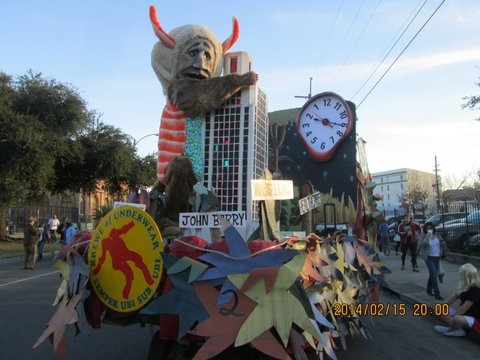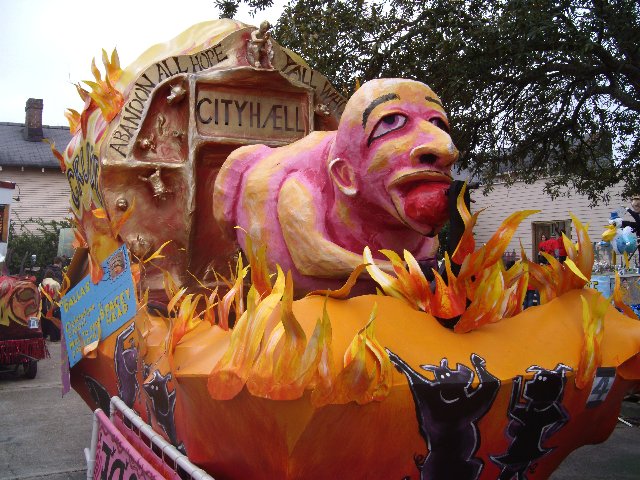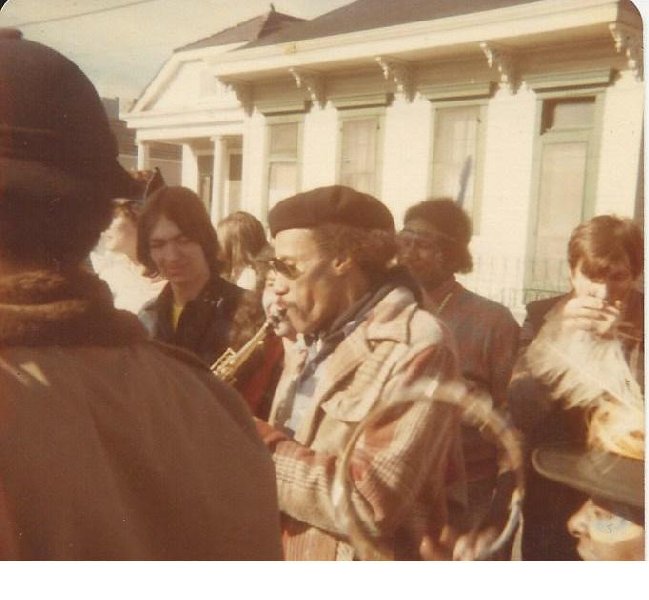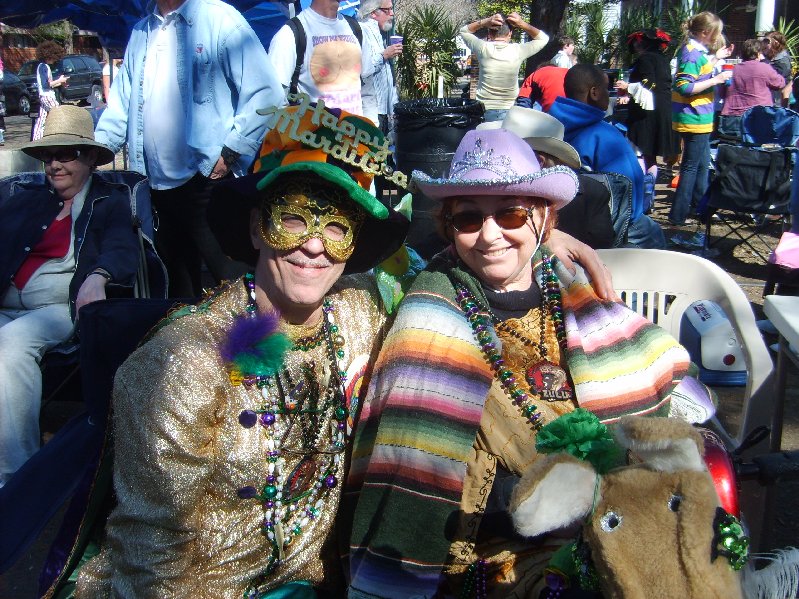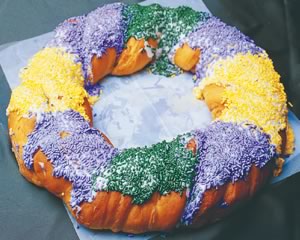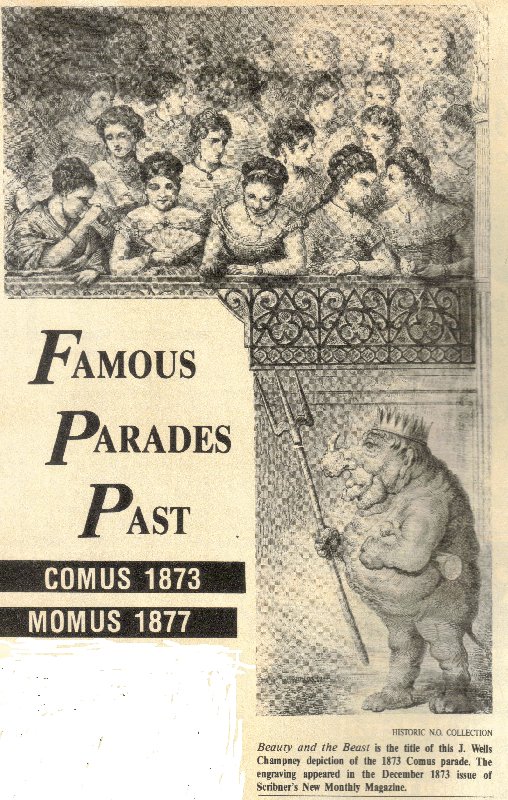Mississippi River
My Annual Ode to Krewe du Vieux!!
0Huge route change this year, no idea why, but I plan to find out.
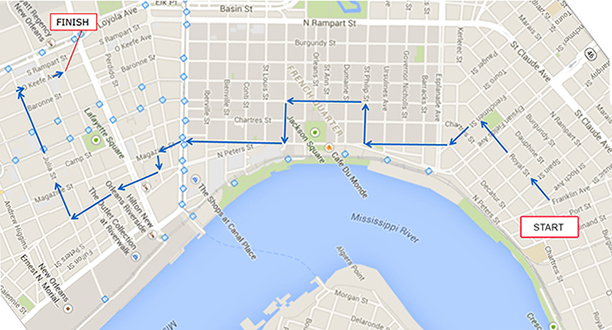
2015 Krewe du Vieux Route
Normally the route starts and stops in the Marigny, and goes through the French Quarter too. This year, we march through the Marigny and the French Quarter but instead of doubling back, we march into the Central Business District, and turn up Julia St to O’Keefe where we end. I believe the length of the parade hasn’t changed, it’s still 3.8 miles. We cross Canal Street for the first time, that is exciting. Canal, Bourbon and St. Charles are the best known streets in the City That Care Forgot.
Marching in a parade is what living in New Orleans is all about. I’ve been in Krewe of Clones, Tucks, and now Krewe du Vieux. Mardi Gras is lots of fun as a spectator sport, but joining the parade changes things big time. The fun, comradeship and excitement of belonging to a Mardi Gras krewe cannot be beat. It’s a top drawer New Orleans experience.
From the KdV web site- The Krewe du Vieux was founded in 1987, born from the ashes of the fabled Krewe of Clones. The Clones began in 1978, based out of the Contemporary Arts Center. This ‘Art Parade’ became wildly popular for their imaginative and creative street performance art. By 1985, the Krewe of Clones had grown to 30 sub krewes and over 1,500 marchers. After the Clones imposed rules designed to create a respectable Uptown parade, Craig “Spoons” Johnson of the Krewe of Underwear and Don Marshall of Le Petite Theatre du Vieux Carre conspired to form a new parading Krewe. Their intent was to bring back parading in the French Quarter in the free-wheeling style of the Clones without myriad rules and expenses. Free from the constraints of decorum and reality, KdV was established as a official parade.
The next paragraph is from Wikipedia.com–
The Krewe du Vieux is perhaps simultaneously the most individualistic and the most traditional of all New Orleans parading krewes. It has no large tractor pulled floats like the larger krewes, using only old-style, small, human-drawn or mule-drawn floats interspersed with marchers on foot. It has no recorded music blaring from boom box trucks, for the Krewe du Vieux uses music only from live bands. The floats are handmade and decorated by members of the respective sub-krewes, often with themes satirizing local politics and customs, sometimes of a bawdy nature — in such aspects arguably closer to early-19th-century Carnival traditions than any other Krewe currently parading. The Krewe du Vieux is the only Krewe still allowed to parade through the French Quarter (other than some small walking Krewes on Mardi Gras Day); krewes with larger floats have been prohibited in the narrow streets of the old town since the 1970s.
In fact, Joan of Arc gets to parade in the French Quarter on 12th Night. They are a walking parade, much like KdV.
There aren’t many adult parades in Mardi Gras but KdV fits the bill. Ribald and rude is how I would describe my own Krewe of Underwear. I’m going to post some rude pictures of our floats in this article, so you can see for yourself.
1979 Mardi Gras Revisited – New Orleans Police Strike!!
0This was a Mardi Gras to remember. The police strike (NOPD) cancelled the parades in Orleans Parish, but Jefferson and St. Bernard Parishes held all their parades. Much of organized Carnival was canceled in New Orleans, but all of the less organized groups came out as usual.
On Fat Tuesday morning we went to the west bank for Grela and the trucks, then headed back over the Mississippi River bridge to find the Wild Tchoupitoulas Indians. We found them, with Chief Jolly, Charles Neville on sax, and Aaron Neville smoking a joint with our little group! We really enjoyed our time with 2nd Chief Norman Bell, Chief Jolly (George Landry), Aaron and Charles Neville, and other Indians and musicians.
We were living on Robert Street off of Danneel St, so we were very close to where the Nevilles all lived back then, on Valence Street. This was right before the Nevilles became major label fodder and began to travel the world in earnest as the pride of New Orleans, the Neville Brothers.
We hung out and followed the Wild Tchoupitoulas for a couple of hours before heading the the French Quarter and a party on Royal Street. These uptown Mardi Gras Indians were followed by a crowd of about 20 people. It was really an enjoyable aspect of Fat Tuesday that year.
Since that time, we’ve gotten into a bit of a fun rut on Fat Tuesday. We set up on St. Charles for Rex and the Trucks, and catch some of Zulu on Jackson Avenue before. There is so much to do and see at the New Orleans Carnival you can hardly go wrong, as long as you travel in a small group for safety reasons. We always bring a number of really excellent foods and drinks for Fat Tuesday. We BBQ, bring hot gumbos, sushi, traditional desserts like king cakes, mandel brot, decadent chocolate cakes, chocolate babka, etc. Not all of that each year, but I always make a half dozen Po-boys in advance for guests and friends who show up during the number of hours we’re on St. Charles enjoying the parades and trucks.
We always bring a king cake, that’s positively necessary.
Little Known Mardi Gras Facts!!
01. Floats mounted on St. Charles Avenue streetcars? The 1900 Nereus parade tried the idea, but the experience was deemed a failure and the club gave up parading soon after. They still hold a yearly ball, however. The Phunny Phorty Phellows decorate a streetcar for their Twelfth Night ride each year, but they don’t decorate the car exterior much, and they don’t mount a float onto a streetcar.
2. Many krewes rent their floats, signing three to five year contacts with the float builder.
3. Not all doubloons are made from aluminum. Many krewes mint fancier ones out of more expensive metals -silver, gold, copper, brass, etc.- that are sometimes designed and painted in Europe. These doubloons are kept by the krewe members or given as krewe favors or gifts.
4. Early New Orleans parades (1860s) were built partially in Paris and finished in New Orleans. The first parade constructed entirely in New Orleans was Comus 1873, entitled Missing Links to Darwin’s Origin of the Species, built by George Soulé. The Missing Links parade was an important event in New Orleans’ Mardi Gras history, becoming one of the first major parades to use satire and political commentary. Many of the images depict figures related to the Civil War and Reconstruction, such as Ulysses S. Grant, Benjamin Butler, and Louisiana Governor Henry Warmoth. Also depicted are notable figures such as Charles Darwin, and Algernon Badger (head of the despised Metropolitan Police).
5. The first recorded throw was in 1871; a Twelfth Night Reveler, masked as Santa Claus, tossed small gifts to the parade crowd.
6. How much of a king is Rex, King of Carnival? In 1950, the Duke and Duchess of Windsor attended the Rex ball and found themselves face to face to face with the pretend only royalty, the King and Queen of Rex. Guess which couple did the bowing? The gracious Windsors!
7. How is the date for Mardi Gras determined? This year, the date is February 12, but any Tuesday from February 3 to March 9 could be the one. The rule is: Mardi Gras is always 46 days before Easter, which is always the first Sunday after the full moon following the Spring Equinox. When is the Spring Equinox? It’s the day when the sun crosses the plane of the earth’s equator, making day and night all over the earth the same length. Since this date shifts, Easter changes, which is why the date of Mardi Gras is moveable.
8. 1899 was the year of the Big Snow. There were big chunks of ice in the Mississippi River during the final weekend before Fat Tuesday.
